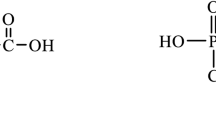Abstract
Taking into consideration the high toxicity of the nitrated and nitrosated products (e.g. nitrosamines, nitrophenols...), their analysis have to be made very carefully.
During the analysis of the nitrogenous compounds, these substances are not well quantified with the common analysis. The DPP seems to be performant and specific. The main polarographic parameters which have an influence on the sensibility of the detection were developped : supporting electrolyte, pH, dissolved oxygen... Besides, a best resolution of the compounds which have the same half wave potential was performed using HPLC technics and DPP detection.
The influence of some inorganic compound like nitrites or macromolecular organic matters (humic substances, proteins.. ) was investigated. The detection limit varies from 1 to 10 ppt according to the matrix.
Access this chapter
Tax calculation will be finalised at checkout
Purchases are for personal use only
Preview
Unable to display preview. Download preview PDF.
Similar content being viewed by others
Bibliography
De Grout R. (1979) “A method for rapid semi-quantitative determination of gas chromatographiable organic matter in surface water. ” H20, 12, 333.
Errede L., Hoyt J.M. (1960) J. Am. Chem. Soc., 82, 436
IARC (1980) Scientific Publication n° 31 “N-nitrosocompounds: analysis, formation and occurence. ” Edited by E.A. Walker, M. Castegnaro, L. Griciute, M. Börzsönyi - Lyon-France.
IARC (1984) Scientific publication n° 57.
Keefer L.K., Scalan R.A., Tannenbaum S.R., (1981), N-nitroso compounds; Acs Symposium serie 174
Kubota Y. (1979) “Experience with the chemical substances control law in Japan. ” Ecotoxicol. and Environ. Safety, 3, 256.
Kunte V.H., Slemrova J. (1975) “Gaschromatographische und massenspektrumetrische identifizierung phenolisher substanzen aus ober-flachen wassern: Zeitschrift fuer. Wasser und Abwasser Forschung, 8, 176–182.
Le Cloirec C. (1984) “Analyse de la micropollution organique azotée dans les stations d’eau potable. Effet de la chloration sur des acides aminés ”. Thèse 1984, Rennes
Mallevialle J., (1984) d’après Schmitt E. (1984) “Composés azotés organiques: identification et évolution le long de filières de traitement d’eau potable” Thèse, Paris VII.
Meijers A.P., (1973) “Organic micropollutants in the river Rhine and Meuse in 1972 ”. H2O, 6, 244.
Meijers A.P., Van Der Leer R.C. (1976) “The occurence of organic micropollutants in the river Rhine and the river Maas in 1974 ”. Wat. res. 10, 597–602.
Morra C.F. et coll. “Organic chemicals measured during 1978 and 1979 in the river Rhine in the Netherlands ” RID. Mededeling, 79, 3.
Perroti E., Lanzoni M., Daniele G., Demalde M., (1965). Ann. Chim, Rome 55, 485.
Piet G.J (1974) “Cause and identification of taste and odour compounds in water.” The Sci. of the total Environ. 3, 103.
Pignatelli B, Descotes G., Bartsch H. (1985) “Composés N-nitrosés: Formation et effets biologiques ”. L’actualité chimique. pp.33–40.
Richardson M. L. (1980) “The detection of some N-nitrosamines in the water cycle ”. Ecotoxicity and Environmental safety 4,207.
Samuelson R. (1978) “Pulse polarographic determinations of nitrosamines. Part I. Determination of N-nitrosodiethanolamine in Grinding fluids”. Anal. Chim. Acta., 102, 133
Sheldon L.S., Hites R.A. (1979) “Sources and movement of organic chemicals in the Delaware River”. Environ. Sci. Tech., 13, 574–579.
Vohra S.K., Harrington G.N. (1980) “The evaluation of a polarographic detector for high performance liquid chromatography in the determination of N-nitrosamines”. J. Chem. Soc. 18, 379–383
Vohra S.K. (1982) “N-nitrosamines and differential pulse polarography ”. Anal. Chem., 1, 6, 145
Zoetman B.C.J. (1980) “Persistent organic pollutants in river water and ground water of the Netherlands. Chemosphere, 9, 231.
Author information
Authors and Affiliations
Editor information
Editors and Affiliations
Rights and permissions
Copyright information
© 1991 Springer Science+Business Media Dordrecht
About this paper
Cite this paper
Guillaume, D., Morvan, J., Laplanche, A., Martin, G. (1991). Contribution of the Differential Pulse Polarography (DPP) to the Analysis of Nitrated and Nitrosated Micropollutants in Waters. In: Angeletti, G., Bjørseth, A. (eds) Organic Micropollutants in the Aquatic Environment. Springer, Dordrecht. https://doi.org/10.1007/978-94-011-3356-2_42
Download citation
DOI: https://doi.org/10.1007/978-94-011-3356-2_42
Publisher Name: Springer, Dordrecht
Print ISBN: 978-94-010-5483-6
Online ISBN: 978-94-011-3356-2
eBook Packages: Springer Book Archive



